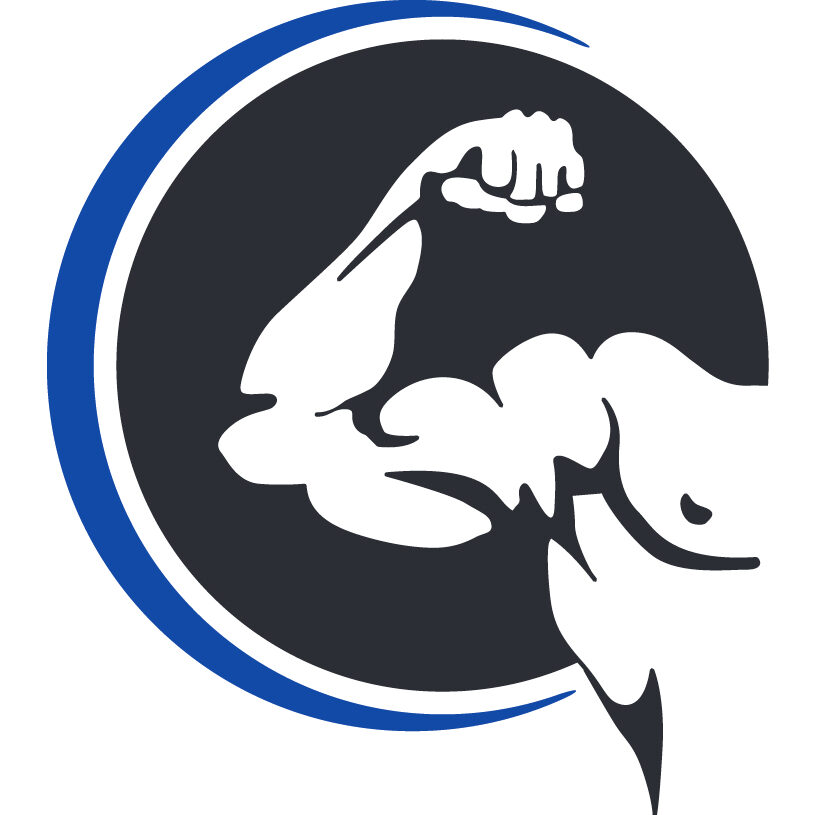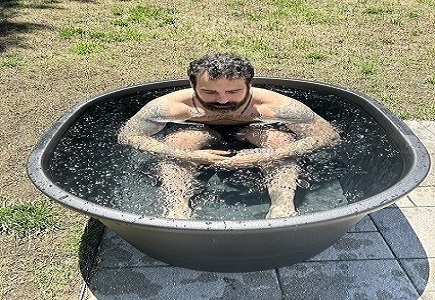I’m going to start off by laying a solid foundation. Understanding what cold plunges are and how they relate to hydrotherapy is essential. Hydrotherapy, which involves the use of water for pain relief and treatment, has been around for centuries. It’s a component of alternative medicine with a variety of techniques, one of which is the cold plunge.
Now what is a big element of hydrotherapy? That’s right cold plunges. You might be familiar with the sight of someone emerging from an icy body of water, looking invigorated. While it may appear extreme to some, this practice is steeped in a long tradition of using cold for therapeutic purposes. The concept is straightforward: submerge in cold water, often below 15 degrees Celsius (59 degrees Fahrenheit), and let the cold do its work.
You’re going to find out about how submerging your body in cold water can be more than just a shocking experience. It’s a scientifically backed practice that harnesses the power of cold to yield various health benefits. Beyond a temporary adrenaline rush, cold water immersion activates the body’s natural healing powers by stimulating blood flow, reducing inflammation, and even fortifying mental resilience.
As the warmer months roll in and we tend to get more physically active, I’ve found cold plunges particularly beneficial for muscle recovery after intense workouts or physical activities. In other words, think of a cold plunge as a cousin to cryotherapy, but without the need for specialized equipment. You could even start this practice in the comfort of your home.
I’ll share more details in the next section about the science that backs up these claims the intriguing mechanisms through which cold plunge therapy does its magic. So, if you’re curious about why a dunk in chilly water might be a good idea, stick around. It’s not just a tool for athletes or the daring, it’s a time-honored technique for improved well-being.
The Science Behind Cold Plunge Therapy
So, here’s the picture: when you immerse yourself in frigid water, your body kick-starts some pretty impressive processes. The shock of cold not only wakes you up but also signals your body to go into a kind of ‘repair mode.’ Scientific literature reveals that cold water immersion can activate the body’s natural defense mechanisms, leading to a cascade of health benefits.
One of the critical ways it does this is by enhancing circulation. The cold causes your blood vessels to constrict, which increases blood flow when you warm up again. That improved circulation is a major help in flushing out metabolic waste and reducing swelling, which is why it’s particularly helpful after a workout. It’s not about toughing it out in the cold; it’s about what happens after you step out.
Now, inflammation is a bit of a buzzword these days, but for a good reason. It’s your body’s natural response to injury or stress, and it’s essential for healing. However, too much inflammation can be detrimental. Regular cold plunges can help manage the body’s inflammatory response effectively, soothing sore muscles and potentially speeding up recovery. Think of it as your body’s way of hitting the reset button.
If you’re wondering how cold plunges stack up next to cryotherapy, you’re not alone. Both involve exposure to cold, but cryotherapy typically uses extremely cold air in a controlled environment, while cold plunge therapy is all about immersion in cold water. They have similar benefits, but cold plunges have the edge in terms of simplicity and ease of access. You can always tweak your at-home setup as you become more accustomed to the cold.
Choose something that resonates with you. Whether it’s for a more invigorating start to your day, post-exercise recovery, or just trying to harness some of those reported wellness benefits, cold plunge therapy could be well worth exploration. And you can count on me to keep things real as I share my personal journey with cold plunges in the next section.
Personal Experiences with Cold Plunges
I’m going to share a bit about my own journey with cold plunge therapy. This isn’t just about theory; it’s about the practical effects and the astonishing changes I’ve observed in my own life. After incorporating cold plunges into my daily routine, the results blew me away in terms of the quality of my muscle recovery.
Initially, submerging in the icy bath was nothing short of a wake-up call for my entire system. I started with short sessions, gradually increasing the duration as I began to enjoy the invigorating feeling. It’s been a powerful way to reduce muscle soreness after intense workouts, something I wasn’t achieving with other recovery methods.
I also noticed that it’s not merely a physical experience; there’s a mental component, too. Cold plunges became a test of mental fortitude, helping me develop better discipline and focus. The rush of energy after each session is something that coffee just can’t match.
Adaptation was key. As my body grew more accustomed to the cold, I increased the ice, pushing my limits responsibly. I found that these incremental challenges played a significant role in my progress, not just in cold tolerance, but in overall well-being.
Now, I’m not saying that cold plunges are a magical cure-all, but they have been a game-changer for me. If you’re thinking about starting your own cold plunge practice, my story might inspire you to take that first step. You can always adjust your approach down the road, as I did, finding the right balance for your body.
Tips for Starting Your Cold Plunge Journey
Starting with cold plunge therapy might seem daunting, but don’t worry too much about getting it perfect on your first go. You can always adjust your approach down the road. Here, I’m going to give you the lowdown on taking those first chilly steps.
First things first, decide on your setup. If you’re like me, you’ll probably choose something practical and within budget. A large tub, a kiddie pool, or even a cleaned-out trash bin can work. Just ensure it’s safe and can hold enough ice-cold water to cover your body up to your shoulders.
Next up, you’ll need to source your ice. Some people start with a single bag and gradually add more. This allows your body to ease into the practice. Remember, the goal is not to shock your system, but to acclimate it over time.
Safety is paramount, so never plunge alone, especially as a beginner. Having someone nearby is a good precaution in case you need assistance. Also, limit your time in the cold water. Begin with a minute or less and increase your exposure gradually.
Finally, listen to your body—it’s your best guide. If it’s telling you that today isn’t the day for a cold plunge, that’s okay. There’s always tomorrow to try again. Respect your body’s signals and ensure you’re both mentally and physically prepared for the cold embrace.
Cold Plunges for Athletic Recovery
If you’re heavily into sports or just committed to keeping fit, pay attention because cold plunge therapy could be your new best friend. After an intense workout, muscles can often feel sore and inflamed. This doesn’t just throw a wrench on your comfort levels; it can also impede your training schedule.
Here’s where the cooldown comes in, quite literally, with a cold plunge. Submerging in chilly waters soon after exertion is believed to speed up recovery. It’s not just about soothing soreness—this practice improves circulation, flushing out metabolic waste and reducing muscle breakdown.
I’ve spoken with athletes who swear by their post-game dip. They’ve reported less muscle pain and a quicker bounce-back to training which, in the long game, can be a competitive edge. But it’s not just for professionals; weekend warriors can also gain immensely from incorporating cold plunge therapy into their recovery regimen.
So, what does ‘cold’ mean in this context? Temperature ranges can vary but generally hover between 50-59 degrees Fahrenheit (10-15 degrees Celsius). And it’s not just about jumping in; timing plays a crucial role. Aim for a plunge lasting typically anywhere from 10 to 20 minutes, after your muscles have cooled down from exercise.
Remember, a cold plunge routine needs to be consistent to yield significant recovery benefits. So, if you’re considering giving this chill therapy a shot, make it a regular part of your post-workout routine. Your body will thank you for the cold embrace that keeps it operating at its best.
The Mental and Physical Health Benefits
You might think hopping into icy water is all about the physical perks, but there’s something more to it. There’s significant chatter about cold plunges sharpening your mind. So, what’s the deal? Immersing yourself in cold water has a way of heightening mental clarity and reducing stress and anxiety. In my opinion, it’s like pressing a giant reset button for your brain.
Regular cold plunges can fine-tune your focus and mental well-being. You’re going to find out about how they can improve mood, instill a sense of resilience, and even help with depression symptoms for some. That’s not to say it’s a cure-all, but it’s another tool in the toolkit for mental health management.
But we can’t overlook the profound physical health benefits as well. It’s not just about muscle recovery; it goes beyond that. Cold plunges can boost your immune system. How? By stimulating the production of white blood cells. Scientists believe the stress of cold-water immersion increases the release of these immune cells, which play a critical part in fighting off illnesses.
Moreover, regular cold plunges have been linked to better sleep and potentially aiding weight management. This is due to the body’s effort to warm up, which increases your metabolism. And, as we all know, a good metabolism is captain of the ship when it comes to managing weight.
Now, approaching the final leg of our journey, I’ll close the loop with some concluding thoughts. We’ll wrap it all up and talk about what embracing cold plunge therapy could look like for your overall lifestyle. Keep reading, because I really hope that you consider trying this—it’s been a game changer for many.
Concluding Thoughts on Cold Plunge Therapy
I’ve walked you through the refreshing world of cold plunge therapy, from the icy waters of science-backed facts to the warm embrace of personal testimonials. To me, cold plunge therapy is a ritual, an act of reverence to our body’s remarkable capacity to rejuvenate and thrive against the odds.
Incorporating cold plunges into your routine isn’t just about braving the chill; it’s about embracing a tradition that spans centuries, tailored to our modern quest for health and vitality. Whether you’re an athlete nursing sore muscles, or someone looking for mental clarity, this simple, yet profound practice could be a game-changer for you.
If you’re ever on the fence, just remember that your first attempt doesn’t need to be your last. Your body will adapt, and what once was a shock to the system can become a moment of invigoration you might soon crave. So, choose something that resonates with you — whether it’s a chilled bath at home, a high-tech cold plunge tub, or a natural body of water.
As for the future, I see cold plunge therapy not as a fleeting trend, but as a mainstay in the repertoire of wellness strategies. It’s a testament to the power of combining ancient wisdom with modern understanding. So, take the plunge — it might just be the transformative experience you’re looking for.


